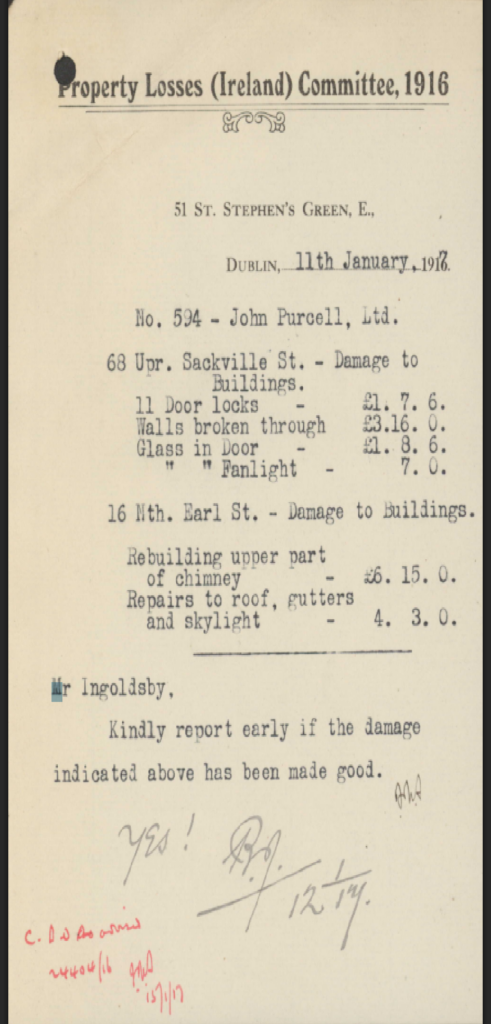Saturday 5 April 2025
- Wolfe Tone Sculpture, St. Stephen’s Green
The scupture is by Edward Delaney R.H.A, and was unveilied in 1967 by President Eamon de Valera.

Theobald Wofe Tone (1763-1798) was the son of a wealthy Protestant coachmaker. He studies Law at Trinity College Dublin and was called to the Irish bar in 1789. However, his focuses soon switched, resulting in him being descried as an ‘Irish revolutionary’, played a leading role in the formation of the Scoiety of United Irishmen in 1791. The Society sought to attain emancipation for Roman Catholics (and Presbyterians) in Ireland, and Tone supported the 1793 Catholic Relief Act.
Wolfe Tone:

1798 Rebellion
Court-martialled in Dublin on 8 November 1798. Tone’s statement, defending his efforts to gain independence for Ireland:
“I entered into the service of the French Republic with the sole view of being useful to my country. To contend against British Tyranny, I have braved the fatigues and terrors of the field of battle; I have sacrificed my comfort, have courted poverty, have left my wife unprotected, and my children without a father. After all I have done for a sacred cause, death is no sacrifice. In such enterprises, everything depends on success: Washington succeeded – Kosciusko failed. I know my fate, but I neither ask for pardon nor do I complain”,
Some have aruged that Wolfe Tone laid the initial grounds for future effots in gainin independence from Britian for Ireland.
1916 Rising: Map of Buildings held in the city centre

2. Shelbourne Hotel

View of Shelbourne Hotel from within St Stephen’s Green
Guests staying in the hotel were moved from front dining room to rooms at back of hotel British military occupied uppper floors overlooking St. Stephen’s Green.
3. St. Stephen’s Green

St Stephen’s Green Members of the Irish Citizen Army under the command of Major Michael Mallin occupied the Green. The Green was one of the first areas occupied.
Trenches dug in the green and barricades around the perimeter.

Fusiliers’ Arch
4. Kildare Street
Kildare Street Club:

5. Trinity College Dublin

Trinity College, just a short distance from both St. Stephen’s Green and the GPO, had only a light defence Easter Monday morning. Approximately 50 members of the Officer Training Corps (OTC), under a Captain and a Lieutenant, and a number of soldiers present, or close by, at the time, closed the gates and took to the roof to defend the College against the anticipated assault, which did not happen.
Defence of Trninit College Cup

After the Rising ended, the Board of Trinity passed resolution of thanks to those who had assisted in its defence and Souvenir silver Cups were presented to those who had participated. On Saturday August 5th in the Provost gardens of Trinity College, a presentation was held to commemorate the success of the OTC and soldiers of the British and Colonial armies. Two large silver presentation cups were presented to Provost Mahaffy and the Commandant of the OTC Captain E.H Alton. Replicas were awarded to remaining troops
6. Westmoreland St.
Purcell’s Tobacco Shop

On Wednesday 26th April a British eighteen-pounder gun, based at the college and dragged up the street to the quayside. Descriptions suggest it would liley have been on the corner of D’Olider Street and Westmoreland Street, explaining why the well-renowned Purcell’s shop would have been damanged.

7. General Post Office (GPO)
The New Post Office, Sackville Street, Dublin 1818

The GPO was likely chosen to be the main headquarters for the 1816 Easter Rising due to the fact that, structurally, it was one of the most imposing buildings in the capital city.

The GPO from the back of the building looking towards Sackville (now O’Connell) Street.
8. Winding Stair

The Widning Stair was built in 1875 as an auction room in 1875 and remodelled in the 1920s. It was in the centre of two main sites of the 1916 Rising – the GPO and the Four Courts.
Some sources that may be of interest:
Media:
1916 UCD & Irish Independent supplement series:
Part 1: Road to the Rebellion – October 16th
Part 2: Assembling the Armies – October 29th
Part 3: Planning the Rebellion – November 12th
Part 4: Leaders of the Rising – November 26th
Part 5: The Rising Erupts – December 10th
Part 6: The Six Day Rebellion – January 7th
Part 7: The Poets’ Revolt – January 21st
Part 8: The Women of 1916 – February 4th
Part 9: Surrender, Trials and Executions – February 18th
Part 10: Legacy of the Rising March 3rd
TV:
Young Indiana Jones Chronicles – Ep 20: Ireland, April 1916
Online resources:
NLI 1916 Exhibition and the personalities and the timeline of the 1916 Rising